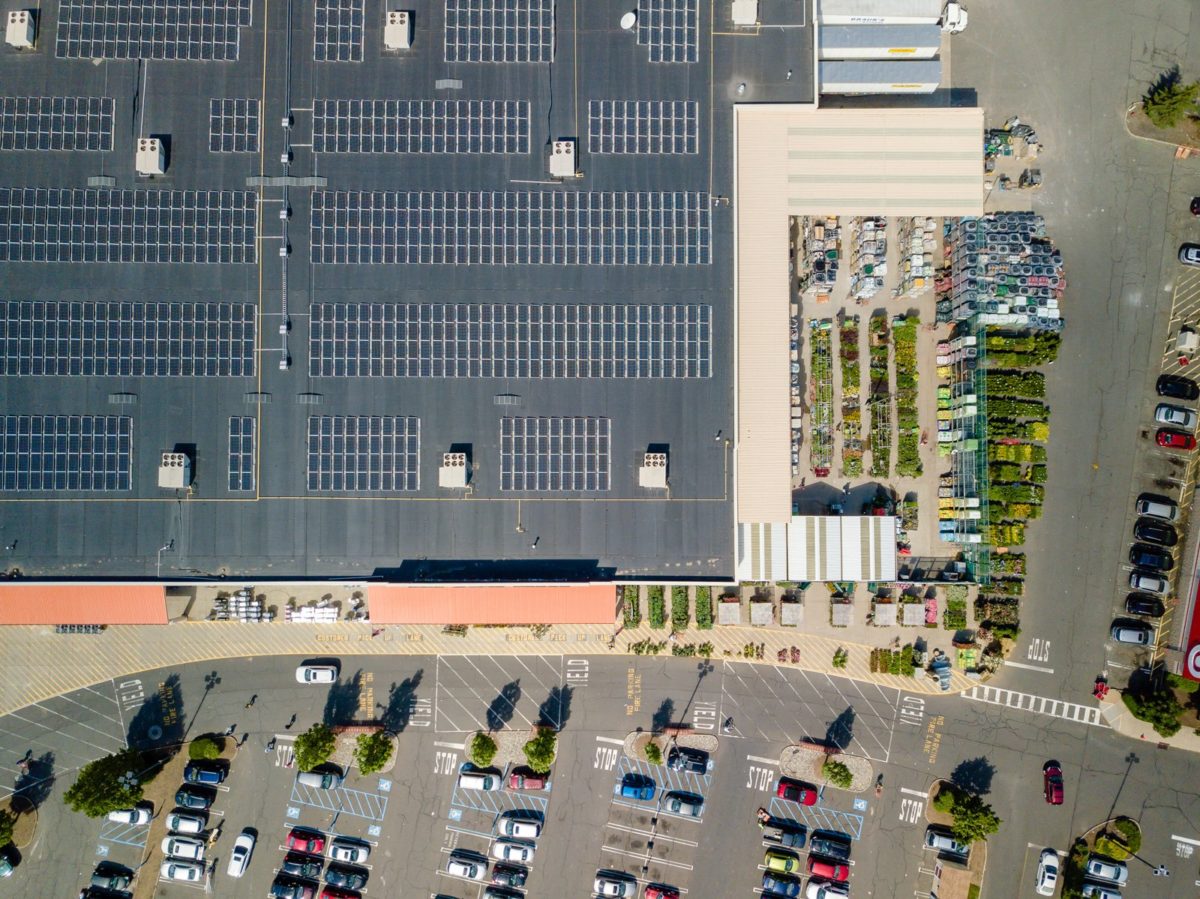Solar adoption has made important strides in the last decade, and the Inflation Reduction Act (IRA) has great potential to help those adoption rates skyrocket. According to SEIA projections, solar capacity is projected to increase to 69% more than what would have been expected without the IRA. Furthermore, it estimates that by 2032, the U.S. will have installed 682 total gigawatts (GW) — more than five times the amount installed today.
That’s due, in part, to the never-before-seen incentives and provisions in the IRA to drive solar adoption and combat climate change. The IRA includes a tax credit of 30% that applies to solar and energy storage projects, and that credit can increase by 10%-20% depending on where materials are manufactured or where the project is located.
Despite its promise, the pathways to IRA benefits are convoluted. Currently, solar tax credits only last until 2032, and there are numerous challenges along the way that the industry, and federal and state governments must overcome. Let’s dive into the current challenges and how the industry can overcome them.
Solar supply chain
Currently, 80% of the panels consumed by the U.S. solar industry originate in four Southeast Asian countries, namely Cambodia, Malaysia, Thailand, and Vietnam. Last June, the federal government issued a 24-month reprieve on tariffs for panel imports from these four countries in response to the Auxin petition to the Commerce Department that investigated whether solar companies were circumventing tariffs by shifting their operations to these countries. Moreover, the U.S. government is also navigating the allegations of human rights abuses in manufacturing and trade concerns with China. All of this is directing the U.S. solar industry to secure a domestic supply chain.
We have started to see the results of these efforts. Nearly $5 billion in solar manufacturing investments, including 47 new manufacturing plants have been announced since President Biden took office. Additionally, the IRA includes two specific tax credits to bring solar manufacturing back to the United States. While these are positive steps towards a domestic supply chain, establishing manufacturing capabilities that can meet industry needs isn’t going to happen overnight. It will take years for manufacturing output to match the solar panel demand of the U.S. solar industry. The 24-month reprieve is essential for the industry to get its bearings as it strengthens its local manufacturing base.
Unfortunately, a controversial Congressional Review Act (CRA) seeks to roll back the current freeze on tariffs. Through a joint letter, clean energy trade groups are currently urging members of Congress to oppose the bill and its potentially devastating effects on the industry. As of most recently, the House Ways and Means Committee voted 26-13 to send the solar CRA to the full House. If passed, the CRA would compromise the economics of current and future projects by making some too expensive to deploy, potentially eliminating 14% of the solar industry’s anticipated deployment in 2023, and costing 30,000 jobs in the solar industry. This would negate the intentions of the IRA and elongate our clean energy transition timeline. A well-oiled supply chain requires strong commitments from developers to procure local materials. While that support and commitment is there, any setbacks such as through the CRA can completely derail the vision that the solar and clean energy industry has for the future.
Workforce shortages
IRA’s build-out of a domestic supply chain as well as clean energy asset deployment will not happen without an adequate number of skilled workers. SEIA projects an additional 200,000 solar jobs will be created by the IRA, leading to 538,000 in total by 2032. Even when domestic manufacturing processes are solidified, there will still be a worker shortage to fully realize the IRA’s potential.
Government, industry, labor, community, and workforce training leaders must convene to guide the creation of industry relevant training programs. In addition, local governments must provide adequate financial compensation especially to retain solar trainees who opt to leave positions in other industries, and developers can offer assurances in regard to hiring once training is completed. States also need to implement relevant skilled training at high school and community colleges to encourage workers to get into solar and clean energy manufacturing. States that offer robust solar tax incentive in addition to skilled training programs will rise to the top in attracting clean energy investment.
Permitting and interconnection woes
Permitting, interconnection, and transmission remain the biggest challenges yet to be solved. Lack of transmission development remains the number one hurdle for scaling clean energy assets as well as number one cause of interconnection delays for distributed generation. The Federal Energy Regulatory Commission reports that about 1,700 GW of solar, wind, and storage await interconnection — up 28% from last year.
Solar industry groups are proactively working to streamline permitting processes for solar installation, but permitting reform will mainly rely on the speedy deployment of transmission infrastructure that would enable large volumes of solar and wind projects to come online. The sooner we can move on adding new transmission capacity, the quicker we can meet the renewable energy capacity demand that will follow the roll-out of IRA incentives. Even with IRA’s allocation of funding towards transmission and grid upgrades, differences between states’ approaches to transmission development can derail infrastructure projects. With this, both state and federal decision-makers will need to work closely with developers and renewable energy industry groups to strategically deploy new transmission and expedite interconnection processes.
Energy equity
Lastly, it would be amiss to not touch on energy equity. A top priority under the IRA is ensuring low-income and energy communities benefit from the multitude of benefits ranging from job and wealth opportunities to clean energy access. For the past decade, solar incentives have largely defaulted toward development in greenfields and around higher income communities. Now with the IRA, a 10% bonus tax credit is available for projects in “energy communities,” defined as brownfields, former coal mines, and coal-fired power plants. Another 10%-20% tax credit will be allocated to projects on Indian land or in low-income communities. The Greenhouse Gas Reduction Fund, a key funding source within the IRA, also offers $7 billion to states and local governments for projects and initiatives that support greenhouse gas reductions, with an emphasis on projects for low-income and disadvantaged communities.
Incentives for both energy communities and low-income communities will increase energy equity, but they both come with their challenges. For energy communities, the biggest barrier right now is lack of comprehensive mapping tools to help identify those sites, and with brownfields especially, there are liability risks and lack of clear understanding on who would assume those risks.
One of the key ways for developers to ensure energy equity is through community solar, something the federal government hopes to see 700% growth in by 2025. The IRA allocates a 20% bonus incentive for projects on low-income housing or designated low-income economic benefit projects. Development of community solar projects in urban areas, brownfields, energy communities, and low-income communities will ensure that the benefits flow easily to low-income residents.
Despite the federal incentives, developers cannot utilize these incentives unless states have an enabling legislation to deploy community solar projects. California’s Public Utilities Commission is currently deliberating whether to create a community solar program that ensures at least 51% of subscribers are low-income, and New York is incentivizing community solar projects on brownfields.
But incentives aren’t one size fits all; different communities have varying needs and states must be mindful of what incentives they currently offer and how that merge with the IRA incentives. States should invite the perspective of qualified solar and storage industry participants to better understand how different permutations of incentive structures will affect projects and establish an incentive package that accommodates the unique income structures, energy rates, and environmental obstacles for that region.
Other barriers that developers are currently faced with are zoning constraints and solar development moratoriums in suburban and rural areas, all of which are red flags for industry.
The IRA presents plenty of viable paths for communities and businesses across the country to utilize renewable energy. It’s a historic moment for the solar industry, but right now, developers and other market participants face far too many uncertainties and potential roadblocks to quickly benefit from the landmark legislation. The solar industry must continue to collaborate with multiple parties to improve the supply chain and development processes to expeditiously reap the benefits the federal government is offering and meet the vision this legislation was set out to achieve.
 Pari Kasotia is senior director and head of policy at DSD Renewables.
Pari Kasotia is senior director and head of policy at DSD Renewables.
The views and opinions expressed in this article are the author’s own, and do not necessarily reflect those held by pv magazine.
This content is protected by copyright and may not be reused. If you want to cooperate with us and would like to reuse some of our content, please contact: editors@pv-magazine.com.








Regarding the article on needed consumer education about IRA tax incentives, the real story is a majority of citizens cannot use the tax incentives. If the government is serious there must be $ billions in outright grants for home energy systems!